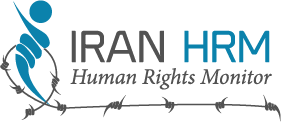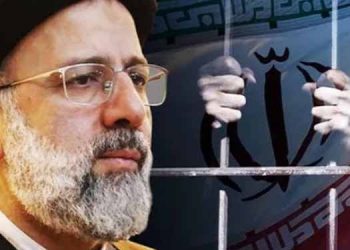What will the regime of murderers do to Iran protests after Ebrahim Raisi takes office?
The appointment of Ebrahim Raisi, Mohseni Ejeii and Mohammad Baqer Qalibaf, major human rights violators, at the key positions of the power in Iran reflects the regime’s “new aggressive and repressive posture” which aims to intensify repression to stifle dissent. A regime of cannibals
Khamenei favors all three men for their roles in the judicial and security systems for four decades and their record of violent repression and human rights abuses.
Band of murderers in charge of the system
Ebrahim Raisi has been one of the key figures of repression in the Iranian judiciary.
He has been referred to as “Ayatollah of massacre” given his role in the mass executions of political prisoners in 1988. He was part of a so-called “death committee” – one of four judges who oversaw secret death sentences for thousands of political prisoners in jails near Tehran during the 1988 massacre. He played a decision-making role in the extrajudicial executions of more than 30,000 prisoners that time when he was 27 years old.
Mohseni Ejeii has been Khamenei’s most trusted judicial director in the Ministry of Intelligence for many years. He has been named the world’s most anti-women judge. In the last four decades, his name has been a reminder of murder, repression, and corruption for the Iranian people.
Brigadier General Mohammad Baqer Qalibaf was elected as the Speaker of Iran’s parliament (Majles) in May 2020. He is best known for being implicated in major financial corruption cases. He was the first IRGC general who became the Mayor of Tehran. Now, he is the first general who serves as Majles Speaker, and the first IRGC commander who leads one of the three branches of government. He has openly defended his record of violent repression as a “club wielder” and said that he was proud to have wielded the stick against dissidents.
Now, they have handed over the executive branch to a mass murderer, the judiciary to a professional assassin, and the legislative branch to a club wielder.
A “new aggressive and repressive posture” in Iranian Regime
Who is Seyyed Ebrahim Raisi?
Who is Seyyed Ebrahim Raisi?
Ebrahim Raisosadati, known as Ebrahim Raisi, was born in Mashhad’s district of Noghan in 1960. After completing elementary school, he...
Read moreWho is Gholam Hossein Mohseni Ejei?
Iran’s new judiciary chief Gholam Hossein Mohseni Ejei is a criminal
Iran’s supreme leader, Ali Khamenei has appointed former intelligence and security minister Gholam Hossein Mohseni Ejei as the new head...
Read moreWho is Mohammad Baqer Qalibaf?
Who is Mohammad Baqer Qalibaf, the Speaker of Iran’s parliament
Mohammad Baqer Qalibaf’s record as a Revolutionary Guards air force commander, a war veteran and a national police chief has...
Read moreViolent crackdown, mullahs’ only response to Iran protests
Protests in Iran began shortly after the clerical regime took power in 1979, and the suppression of freedoms by the Velayat-e Faqih rule, and have increased significantly in recent years.
In fact, the spiraling protests in Iran are due to long-running mismanagement and corruption by the mullahs, which has brought Iranian society to a boiling point.
Currently, the Iranian people, while deprived of the most basic necessities of life, water, bread and electricity. They are also dealing with the Coronavirus and the fear of the death of their loved ones. They are also suffering from hunger, severe water shortage and poverty.
In less time in the ancient history of Iran, people have been under such pressure and besieged by this amount of misery. This is while, they live in a country rich in oil and gas and other natural resources.
The clerical regime has shown in the past four decades that, due to its structural weakness, it is unable to accept any protests and inevitably responds to any dissent with violence.
Sociologists see the suppression of protests in Iran as a sign of the regime’s fragility.
Therefore, it can be concluded that the clerical regime, besieged by various political, social and economic crises, and in the face of growing public discontent, has no answer but to step up repression.
Appeasement policy green lights gross human rights abuses in Iran
After the massacre of thousands of political prisoners in 1988, Western governments and the United Nations pursued a policy of appeasement with the regime, turning a blind eye on the most hideous crimes against humanity since the World War II.
One of the most adverse consequences of the policy appeasement has been the impunity enjoyed by the perpetrators of the 1988 massacre.
Granting immunity to the regime’s leaders has given them a chance to conceal this crime according to a well-planned scheme similar to the manner in which they carried out the massacre of political prisoners.
The highest officials responsible for the 1988 massacre and members of the Death Commissions are among senior officials of the current regime. A regime of cannibals
Such immunity has emboldened the regime to continue its violent repression and serious rights abuses.
Advocate respect for Iranian people’s human rights
Iran Human Rights Monitor believes the following are the most urgent steps needed to safeguard and respect the human rights of the Iranian people.
The dossier on human rights violations in Iran, particularly the 1988 massacre, needs to be referred to the UN Security Council.
The international community needs to end three decades of impunity for the leaders of the clerical regime and to hold them to account for their crimes.
The Human Rights Council needs to conduct an international investigation into the 1988 massacre. This would be the first step to end the impunity for the officials, agents and those who ordered the largest political crime of the century.
Khamenei and other leaders of the regime need to be prosecuted and face justice for committing crimes against humanity.
All governments need to make their ties and commerce with the clerical regime contingent on end to executions and torture in Iran.
The clerical regime needs to respect the Iranian people’s rights to freedom of assembly, freedom of expression, and peaceful protests so that they can express their legitimate demands.




































